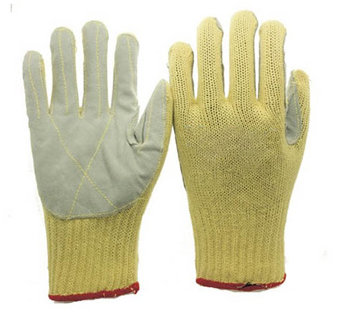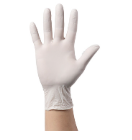At work, our hands can be inadvertently injured. A safety glove is a type of personal protective equipment (PPE) that helps workers handle items such as chemicals, hazardous materials, etc. that may cause injury to their hands, to avoid hand injuries on the job, and for these workers to protect themselves from injury a line of security.
However, gloves are not a universal product and are used in many different applications in multiple industries, they must be equipped with the correct type of gloves for the job they will be performing and the specific hazards they may encounter. There are many factors to consider when choosing the most suitable and safe gloves, but the most important is the material from which the gloves are made and the protection they provide to determine which gloves provide the protection you need for the job you do.
What are the different types of gloves you need to know. Below, we'll give you the information you need to choose the best type of gloves for work in different industries. We'll start with the different factors to consider when choosing gloves, and then we'll identify the most common types of gloves and their pros and cons.
Cotton/Fabric Gloves
These gloves are the most common type of gloves for general work or projects that do not require a high level of protection. These gloves provide a thin, lightweight fabric covering that acts as a thin, breathable layer between workers' skin and the tools and materials they are handling. They are primarily used to prevent minor abrasions or chipping but provide minimal protection against punctures, burns, or cuts. They help keep hands clean and can prevent minor bruises and abrasions.
Coated Fabric Gloves
These gloves are general purpose and somewhat better than uncoated fabric gloves, these gloves offer more protection with higher levels of puncture and cut resistance, alkaline protection of concrete products, and better chemical resistance sex. Nitrile, PVC, and Polyurethane are common paint types, but the actual paint you need depends on the job itself.

Nitrile Gloves
Nitrile (NBR) is made from synthetic rubber. Nitrile gloves protect against biohazards, oils, and chemicals and are used by many professionals in science and healthcare. In addition, using nitrile can reduce the risk of allergic reactions. Some people don't like the tactile feel of nitrile gloves and feel that they are hindered and inflexible. This preference is an important consideration when working with precision instruments or small parts.

Leather Gloves
Leather gloves provide good grip, insulation, and durability. Because they are thicker than regular fabrics, they are able to provide a higher level of protection.
But when overexposed to heat, leather gloves tend to dry out, crack or shrink. For this reason, they are not suitable for use in heated jobs, although they do provide adequate burn protection when in good condition.
![)~)LCF%$1CXU07P868]UH`F.png )~)LCF%$1CXU07P868]UH`F.png](https://www.t-safety.com/data/upload/ueditor/20220625/62b6acea0b68a.png)
Latex Gloves
Latex gloves are most commonly used in medical settings or laboratories and their primary function is to protect hands from biological hazards, chemicals, and other harmful substances. The material is very thin and flexible, making it suitable for some professionals in high-precision occupations, such as surgeons. Latex gloves are a staple in the medical field and other industries.
Latex gloves are sturdy and comfortable and are an excellent choice when you need to handle biological materials or water-based solutions. They are used in many settings - dentistry, child and elderly care, food service, beauty, and even in some automotive and manufacturing sectors. It's important to note that these gloves are not puncturing or heat resistant and do not provide adequate protection around sharp objects or around flames. They are also not the best choice for handling organic solvents. When latex gloves get small punctures or tears, the wearer may not notice them, so extra care must be taken around sharp objects.
Butyl Rubber Gloves
Using butyl rubber gloves is the best option when handling chemicals. Because they're rubber, they won't absorb liquids they come in contact with. This rubber is resistant to harmful chemicals such as alcohol, ketones, nitro compounds, acids, alkalis, and even rocket fuel. They can also withstand high and low temperatures, abrasion, oxidation, and ozone corrosion
Anti-Vibration/Impact Gloves.
Prolonged vibration brings problems to work. Fortunately, there are anti-vibration gloves that can help reduce the effects of prolonged vibration. These gloves help absorb most of the impact of vibrating tools or equipment, reducing the amount of energy that is delivered to your hands. They are most commonly used in the manufacturing, automotive, and construction industries where workers need to use vibrating tools for extended periods of time.
Stab Resistant Gloves
These gloves are specifically designed to prevent cuts or punctures in your hands. The braided design helps deflect sharp objects that could pierce the skin. Industries that perform manual cutting, such as construction, food service, and warehousing, can benefit from stab-resistant gloves.
![RN6Q)[00ZJ3~}(]93GP~@20.png RN6Q)[00ZJ3~}(]93GP~@20.png](https://www.t-safety.com/data/upload/ueditor/20220625/62b6b153d8a6c.png)
Aluminized Gloves
Aluminum-plated gloves are designed for heat resistance and are one of the best gloves to wear when working in high temperatures. They are very resistant to high temperatures, which is why they are common in welding, foundries, and laboratories. They can protect your hands in temperatures up to 2,000ºF.
Choosing the Right Glove Type for the Job
Understanding the hazards your work can pose to your hands can help you choose the right type of gloves. Start by identifying hazards, then look for your work safety gloves to find the best solution.
Copyright © Hebei Sinotools Industrial Co.,Ltd. All Rights Reserved | Powered by  Sitemap
Sitemap